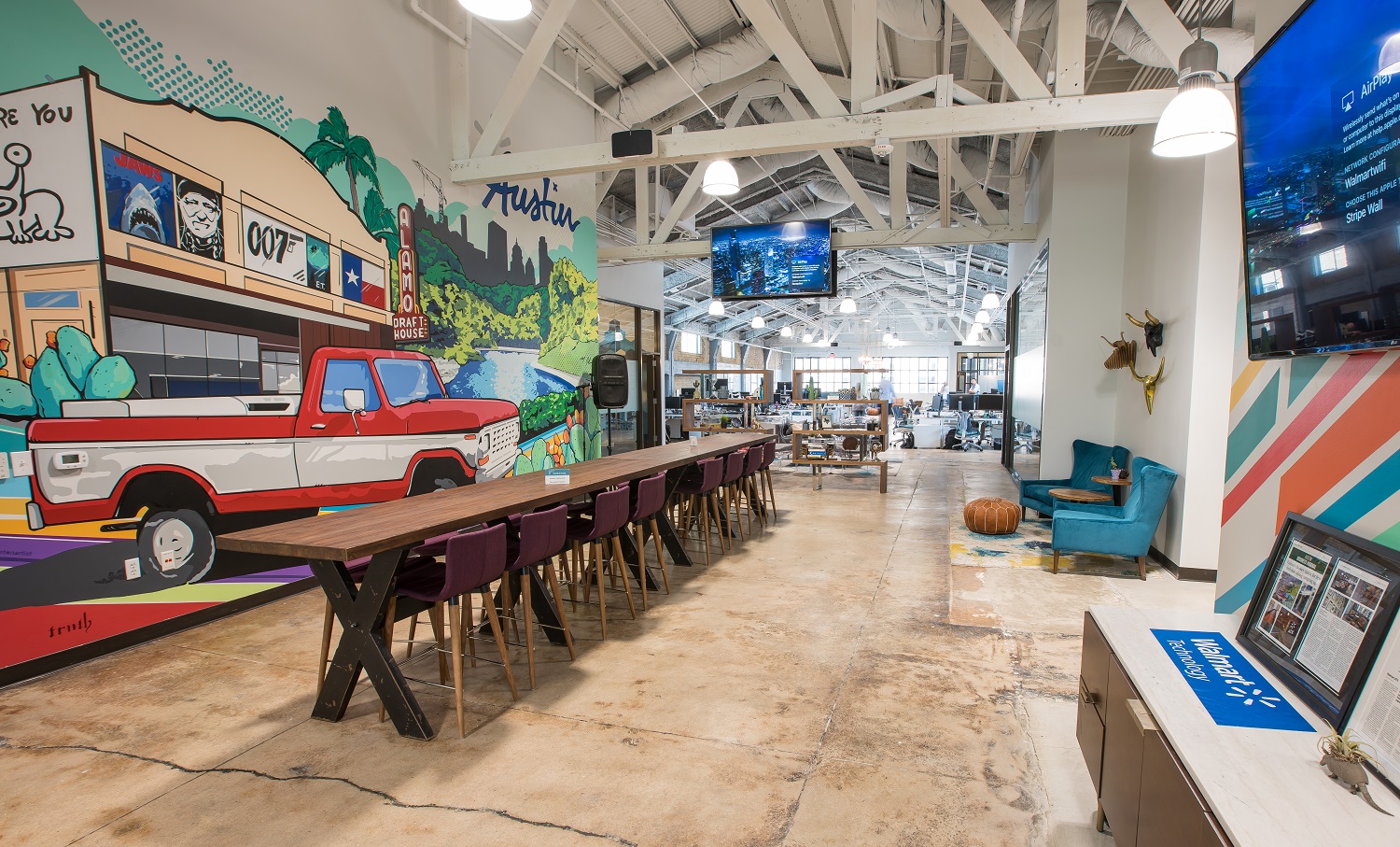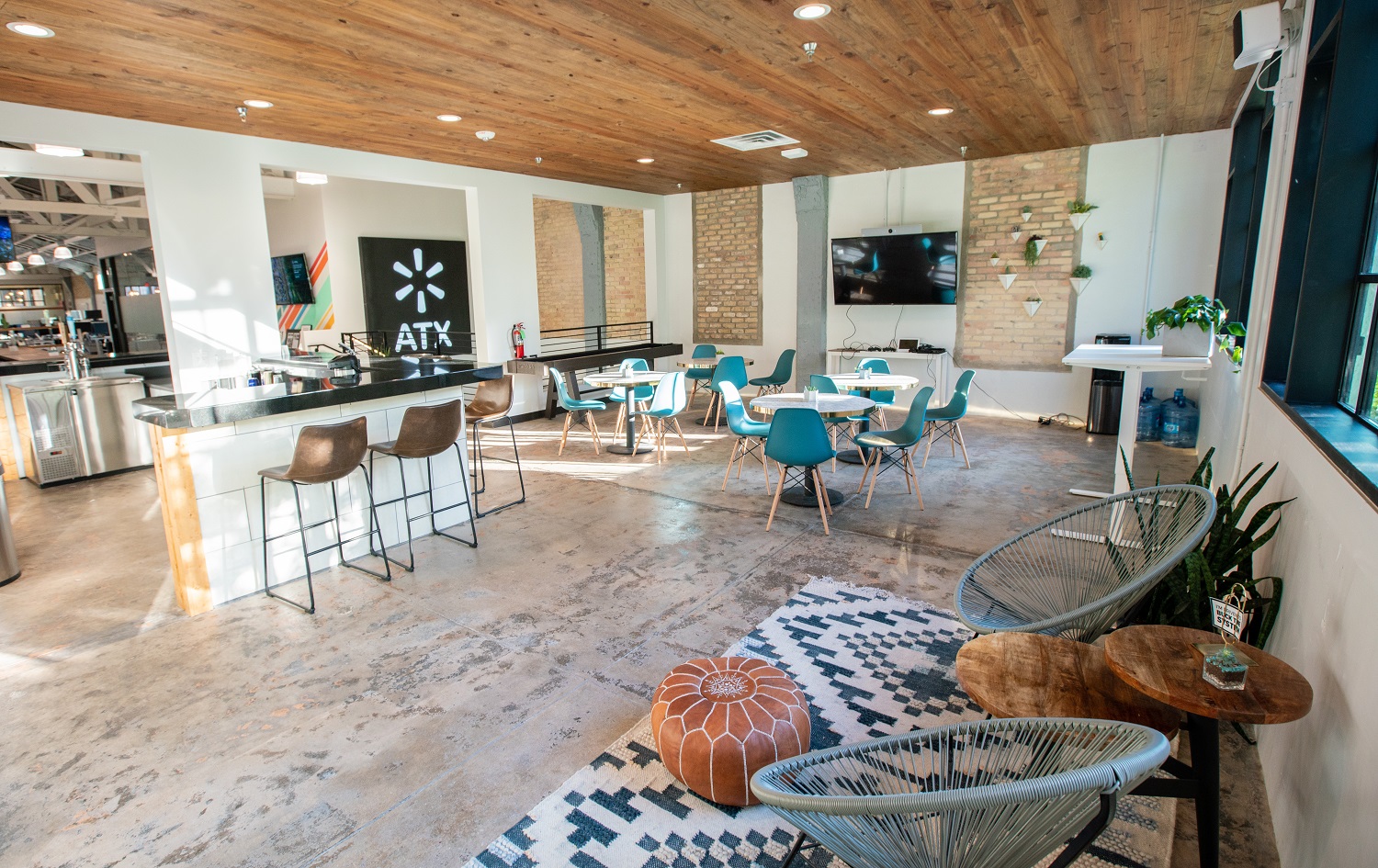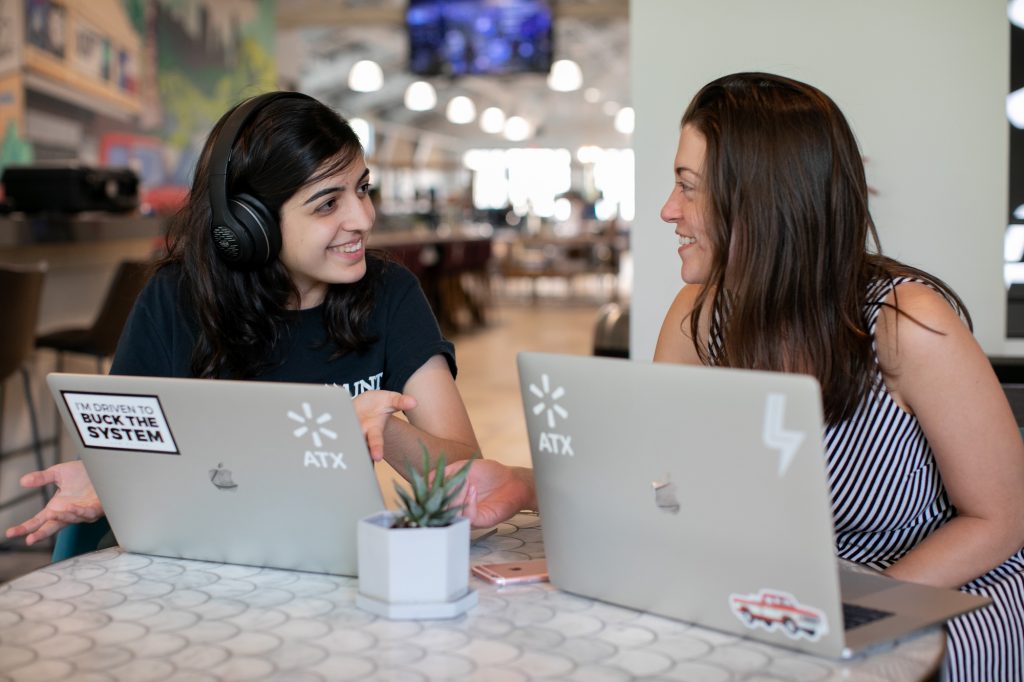A new Walmart ‘cloud factory’ will accelerate digital innovation, boost business efficiency
Walmart is expanding its technology center in Austin, Texas, to accelerate digital innovation that transforms how associates work and delivers more convenient ways for customers to shop.
About 30 technologists, including engineers from both Walmart and Microsoft, will work together side by side in the cloud factory, expected to open in early 2019 as an extension to a strategic partnership announced in July. The factory will be an expansion of Walmart’s innovation hub, a vibrant workplace opened earlier this year in the center of Austin’s growing technology scene.
The Walmart-Microsoft team – known internally as “4.co” for its location at Fourth and Colorado streets – will initially focus on migrating Walmart’s thousands of internal business applications to Microsoft Azure. The team will also build new, cloud-native applications. The collaboration will be part of a multi-year journey to modernize Walmart’s enterprise application portfolio, create more efficient business processes and decrease operational costs associated with legacy architecture.

The work will continue digital solutions already deployed at Walmart, including thousands of IoT sensors on HVAC and refrigeration systems that process a billion daily data messages from stores worldwide. The solution helps Walmart save energy and prevent product loss.
Based in Arkansas, the global retailer is also deploying Microsoft AI in a number of use cases, including internal chatbots that help associates navigate benefits, find mentors and better manage supplier engagements. Walmart has also deployed a natural language processing platform capable of processing 40 terabytes of unstructured text and providing near real-time insights and actions in support of business operations.
To shed light on 4.co and the company’s innovations, Transform chatted with Clay Johnson, executive vice president and enterprise chief information officer at Walmart.
TRANSFORM: Why is digital transformation important to Walmart?
JOHNSON: Technology is changing the way people live, work and shop – and the pace of change is only getting faster. We want to create new and incredibly convenient ways for our customers to shop, and as technology cycles get shorter and shorter, we must increase our speed and agility.
To do this, we’re digitally transforming processes and empowering our associates with consumer-grade technology and tools. Digital transformation is pervasive across the company and we’re pushing the envelope to accelerate innovation.
TRANSFORM: How is Walmart using Microsoft AI? Where do you see it going?

JOHNSON: We’re layering AI across every facet of our business. We have lots and lots of data that represents value we can leverage. That’s where AI, machine learning and Cognitive Services in Microsoft Azure come in to play.
We took our natural language processing platform and a single business case – post-payment auditing – to build out the platform at massive scale and apply it in other use cases. For associates who are tasked with finding that needle in the haystack, machine learning will help them go through unstructured text quickly. But ultimately, it’s not just about efficiency. A lot of this will drive impact to the bottom line.
With our chatbots, associates can use them to find a mentor or ask questions about benefits. They can get simple questions answered quickly. By saving them time, that’s more time they can spend on the sales floor helping our customers.
TRANSFORM: What are some benefits you’ve seen with other technologies like IoT and edge computing?
JOHNSON: With our IoT work and sensor enablement, we’re looking at our energy consumption and other factors to predict equipment failures before they happen. Improving equipment performance can result in enhanced energy efficiency, which lowers costs and our carbon footprint. That’s good for the customer and the environment. Sustainability is a big deal for us.
Putting IoT data into edge analytics lets us look at data at a store level and backhaul it to Azure to look at it across a region or the whole U.S. We started talking to Microsoft about this concept of a set of stores being a “micro-cloud,” and you roll them into Azure for data analytics and insights. A lot of this work is coming out of our Austin site.
TRANSFORM: How did the concept of 4.co come to be? What are the team’s goals?
JOHNSON: With this partnership with Microsoft, we started talking, ‘‘Hey, what’s the best way to accelerate all the stuff we’re doing here? We need help and expertise. We want to move fast. How do we partner our smart people with Microsoft’s smart people?”
Then it was obvious: ”Why don’t we just co-locate the teams together.” We haven’t done something like this before with co-location, but I think the outcomes are going to be huge and strengthen our partnership even more. You’re going to see a lot more co-innovation around IoT, computer vision, big data and real-time analytics.
TRANSFORM: How do you think both companies will benefit?
JOHNSON: We’re going to learn a lot from each other. We’re going to learn a lot from Microsoft – which apps make sense to get to the cloud quickly and which don’t.
Microsoft’s going to get to see stuff at a scale they’ve never seen before. [Walmart has 11,200 global stores and 2.2 million associates]. I think they’ll learn a lot from our footprint. Co-locating top engineers from both companies will deepen the technical brainpower for creating disruptive, large-scale enterprise solutions for Walmart.

TRANSFORM: Why did Walmart pick Austin for its technology office and 4.co? How are you interacting with the community there?
JOHNSON: You see a lot of tech companies and startups in Austin, and we wanted to blend that culture and the universities with our culture as we continue to grow and add tech talent to Walmart. Austin is a huge recruiting opportunity for us. Because our team in Austin works closely with our technology teams in Bentonville, [Arkansas], a pipeline of technology talent into Bentonville has also emerged.
Austin is also a very meetup-heavy city. So we were really purposeful in picking a location that puts us in the middle of the tech meetup scene. We host deep learning, AI and chatbot meetups. We do a lot of Women Who Code events.
We recently did a hackathon with Microsoft and the University of Texas at Austin, where we worked with a no-kill animal shelter. The students really enjoyed doing something for the local community. [The event focused on helping dogs through predictive modeling of the canine parvovirus disease].
TRANSFORM: What’s your vision for the future of retail?
JOHNSON: I think you’re going to see an omnichannel-type world that is a blend of e-commerce and brick and mortar, where consumers can have access to things at any point, any time. They can order online and pick up in the store or have it delivered same-day. You can see we’re starting to do that with our online grocery right now.
Top photo: Walmart’s technology center in Austin, Texas. All photos courtesy of Walmart. Follow Clay Johnson @ClayMJohnson.








